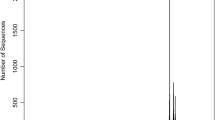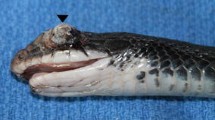Abstract
Several studies indicated that Odorrana grahami (O. grahami) skin contains abundant antimicrobial peptides, and the skin was recognized as hostile habitat for microorganisms. In this study, the microbial community was evaluated by 16S rRNA gene sequencing, and two associated bacterial isolates were obtained and characterized from the skin of O. grahami. Sixteen bacterial genera were identified from the O. grahami skin by uncultured clone sequences. The dominant groups were Comamonas, Bacillus and Morganella, and the genus Comamonas was the most abundant group (41.7% of the total) of the community. Fortunately, strains CW-25T and CW-518 belonging to genus Comamonas were isolated by plating dilutions. The polyphasic taxonomy results indicated that strain CW-25T was a member of Comamonas aquatica, it showed much higher antimicrobials resistance than the closest C. aquatica strains of LMG 2370T, LMG5937 and LMG 6112 isolated from freshwater. Based on the polyphasic taxonomic studies and antimicrobials resistance characteristics, two subspecies of Comamonas aquatica subsp. aquatica nov. and Comamonas aquatica subsp. rana nov. were proposed. The super-antimicrobial resistance endows the strains of Comamonas aquatica subsp. rana inhabit the O. grahami skin, and the primary defense of O. grahami might be composed by the antimicrobial peptides and the native bacteria.



Similar content being viewed by others
References
Conlon JM, Al-Ghaferi N, Abraham B, Jiansheng H, Cosette P, Leprince J, Jouenne T, Vaudry H (2006) Antimicrobial peptides from diverse families isolated from the skin of the Asian frog, Rana grahami. Peptides 27(9):2111–2117
Lai R, Zheng YT, Shen JH, Liu GJ, Liu H, Lee WH, Tang SZ, Zhang Y (2002) Antimicrobial peptides from skin secretions of Chinese red belly toad Bombina maxima. Peptides 23(3):427–435
Park S, Park SH, Ahn HC, Kim S, Kim SS, Lee BJ (2001) Structural study of novel antimicrobial peptides, nigrocins, isolated from Rana nigromaculata. FEBS Lett 507(1):95–100
Li J, Xu X, Xu C, Zhou W, Zhang K, Yu H, Zhang Y, Zheng Y, Rees HH, Lai R, Yang D, Wu J (2007) Anti-infection peptidomics of amphibian skin. Mol Cell Proteom 6(5):882–894
Che Q, Zhou Y, Yang H, Li J, Xu X, Lai R (2008) A novel antimicrobial peptide from amphibian skin secretions of Odorrana grahami. Peptides 29(4):529–535
Holguin H, Amariles P, Ospina W (2017) Evolutionary interactions as a possible mechanism of drug interactions: an approach to the control of antibiotic-resistant bacteria. Rev Chilena Infectol 34(4):307–313
De Vos P, Kersters K, Falsen E, Pot B, Gillis M, Segers P, De Ley J (1985) Comamonas Davis and Park 1962, gen. nov., nom. rev. emend., and Comamonas terrigena Hugh 1962, sp. nov., nom. rev. Int J Syst Bacteriol 35(4):443453
Kämpfer P, Busse HJ, Baars S, Wilharm G, Glaeser SP (2018) Comamonas aquatilis sp. nov., isolated from a garden pond. Int J Syst Evol Microbiol 68(4):1210–1214
Marmur J (1961) A procedure for the isolation of deoxyribonucleic acid from microorganisms. J Mol Biol 3:208–218
Cui XL, Mao PH, Zeng M, Li WJ, Zhang LP, Xu LH et al (2001) Streptomonospora salina gen. nov., sp. nov., a new member of the family Nocardiopsaceae. Int J Syst Evol Microbiol 51(2):357–363
Nedashkovskaya OI, Kim SB, Suzuki M, Shevchenko LS, Lee MS, Lee KH et al (2005) Pontibacter actiniarum gen. nov., sp. nov., a novel member of the phylum ‘Bacteroidetes’, and proposal of Reichenbachiella gen. nov. as a replacement for the illegitimate prokaryotic generic name Reichenbachia Nedashkovskaya et al. 2003. Int J Syst Evol Microbiol 55(6):2583–2588
Yamaguchi S, Yokoe M (2000) A novel protein-deamidating enzyme from Chryseobacterium proteolyticum sp. nov., a newly isolated bacterium from soil. Appl Environ Microbiol 66(8):3337–3343
Zhou Y, Dong J, Wang X, Huang X, Zhang KY, Zhang YQ, Guo YF, Lai R, Li WJ (2007) Chryseobacterium flavum sp. nov., isolated from polluted soil. Int J Syst Evol Microbiol 57(8):1765–1769
Gerhardt P, Murray RGE, Wood WA, Krieg NR (1994) Methods for general molecular bacteriology. American Society for Microbiology, Washington, DC
Wauters G, De Baere T, Willems A, Falsen E, Vaneechoutte M (2003) Description of Comamonas aquatica comb. nov. and Comamonas kerstersii sp. nov. for two subgroups of Comamonas terrigena and emended description of Comamonas terrigena. Int J Syst Evol Microbiol 53(3):859–862
Sasser M (1990) Identification of bacteria by gas chromatography of cellular fatty acids. USFCC Newslett 20:1–6
Mandel M. Marmur J (1968) Use of ultraviolet absorbance temperature profile for determining the guanine plus cytosine content of DNA. Methods Enzymol 12B:195–206
De Ley J, Cattoir H, Reynaerts A (1970) The quantitative measurement of DNA hybridization from renaturation rates. Eur J Biochem 12(1):133–142
Huss VA, Festl H, Schleifer KH (1983) Studies on the spectrophotometric determination of DNA hybridization from renaturation rates. Syst Appl Microbiol 4(2):184–192
Jahnke KD (1992) BASIC computer program for evaluation of spectroscopic DNA renaturation data from GILFORD SYSTEM 2600 spectrophotometer on a PC/XT/AT type personal computer. J Microbiol Methods 15:61–73
Tamura K, Stecher G, Peterson D, Filipski A, Kumar S (2013) MEGA6: molecular evolutionary genetics analysis version 6.0. Mol Biol Evol 30(12):2725–2729
Thompson JD, Gibson TJ, Plewniak F, Jeanmougin F, Higgins DG (1997) The CLUSTAL_X windows interface: flexible strategies for multiple sequence alignment aided by quality analysis tools. Nucleic Acids Res 25(24):4876–4882
Kimura M (1980) A simple method for estimating evolutionary rates of base substitutions through comparative studies of nucleotide sequences. J Mol Evol 16(2):111–120
Felsenstein J (1985) Confidence limits on phylogenies: an approach using the bootstrap. Evolution 39(4):783–791
Stackebrandt E, Goebel BM (1994) Taxonomic note: a place for DNA-DNA reassociation and 16S rRNA sequence analysis in the present species definition in bacteriology. Int J Syst Bacteriol 44:846–849
Acknowledgements
This work was supported by National Key R&D Program of China (Grant No. 2017YFC1600902), and the grants from the National Natural Science Foundation of China (Grant No. 31671949) and the Anhui Natural Science Foundation (Grant Nos. 1608085J08 and 1608085QC57).
Author information
Authors and Affiliations
Corresponding authors
Ethics declarations
Conflict of interest
The authors declare that they have no competing interests.
Ethical Approval
This study was carried out in strict accordance with the guidelines of the Animal Care Committee of Anhui Agricultural University (Reference No. SYXK 2016-011). The protocol was approved by the Committee on the Ethics of Anhui Agricultural University.
Additional information
Publisher’s Note
Springer Nature remains neutral with regard to jurisdictional claims in published maps and institutional affiliations.
Electronic supplementary material
Below is the link to the electronic supplementary material.
Rights and permissions
About this article
Cite this article
Zhao, X., Du, Z., Chen, J. et al. Bacterial Community Analysis on the Skin of Odorrana grahami and Proposal of Comamonas aquatica subsp. aquatica subsp. nov. and Comamonas aquatica subsp. rana subsp. nov.. Curr Microbiol 76, 470–477 (2019). https://doi.org/10.1007/s00284-019-01648-1
Received:
Accepted:
Published:
Issue Date:
DOI: https://doi.org/10.1007/s00284-019-01648-1




